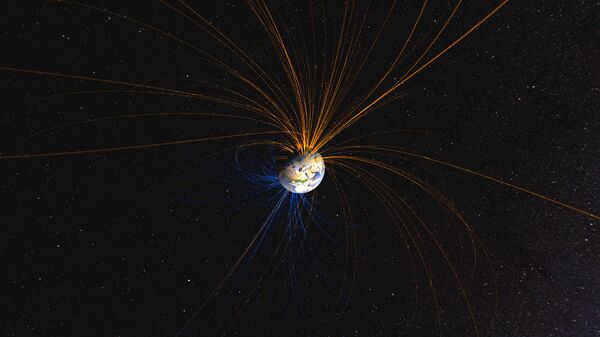An ancient tree that offers insight into the reversal of the Earth's magnetic field in its rings has been discovered in New Zealand, stuff.nz reports.
As excavation work was being conducted for expansion of a geothermal power plant on New Zealand's North Island, workers hit upon the tree, better known by its Māori name kauri, buried in 26 feet of soil, measuring eight feet in diameter and 65 feet in length. Carbon dating revealed it lived for 1,500 years, between 41,000 and 42,500 years ago.
The discovery has stunned scientists, since never before has a tree been found with a lifespan that entirely covers a point in time when the Earth’s magnetic field almost reversed. At the time, the magnetic north and south shifted, but did not quite complete a full reversal.
"There's nothing like this anywhere in the world. It's the time it takes for this movement to occur that is the critical thing...We will map these changes much more accurately using the tree rings," Alan Hogg, from New Zealand's University of Waikato, told the website.
Analysis of tree samples, likely to offer insight into what to expect the next time such an event occurs, is being conducted by scientists headed by Chris Turney from the University of New South Wales.
"We will have increased cosmic radiation. It will take out satellites and it might take out other communication infrastructure," Hogg said.
The Earth's magnetic field is generated by iron in the planet's core. As it moves, it produces electric currents that extend into space. The magnetic field acts as a barrier, protecting the Earth from the solar wind - a stream of charged particles from the Sun that could strip away the ozone layer if it were to impact the atmosphere.
Instances of the magnetic field reversing or attempting to do so weaken it, thus leading to more radiation seeping in.
Previously, scientists have linked extinction events to magnetic field reversals.
Magnetic field reversals happen at random intervals, although NASA scientists claim in the last 20 millions years a pattern has been established, occurring once every 200,000 to 300,000 years. The last full reversal took place around 780,000 years ago.


